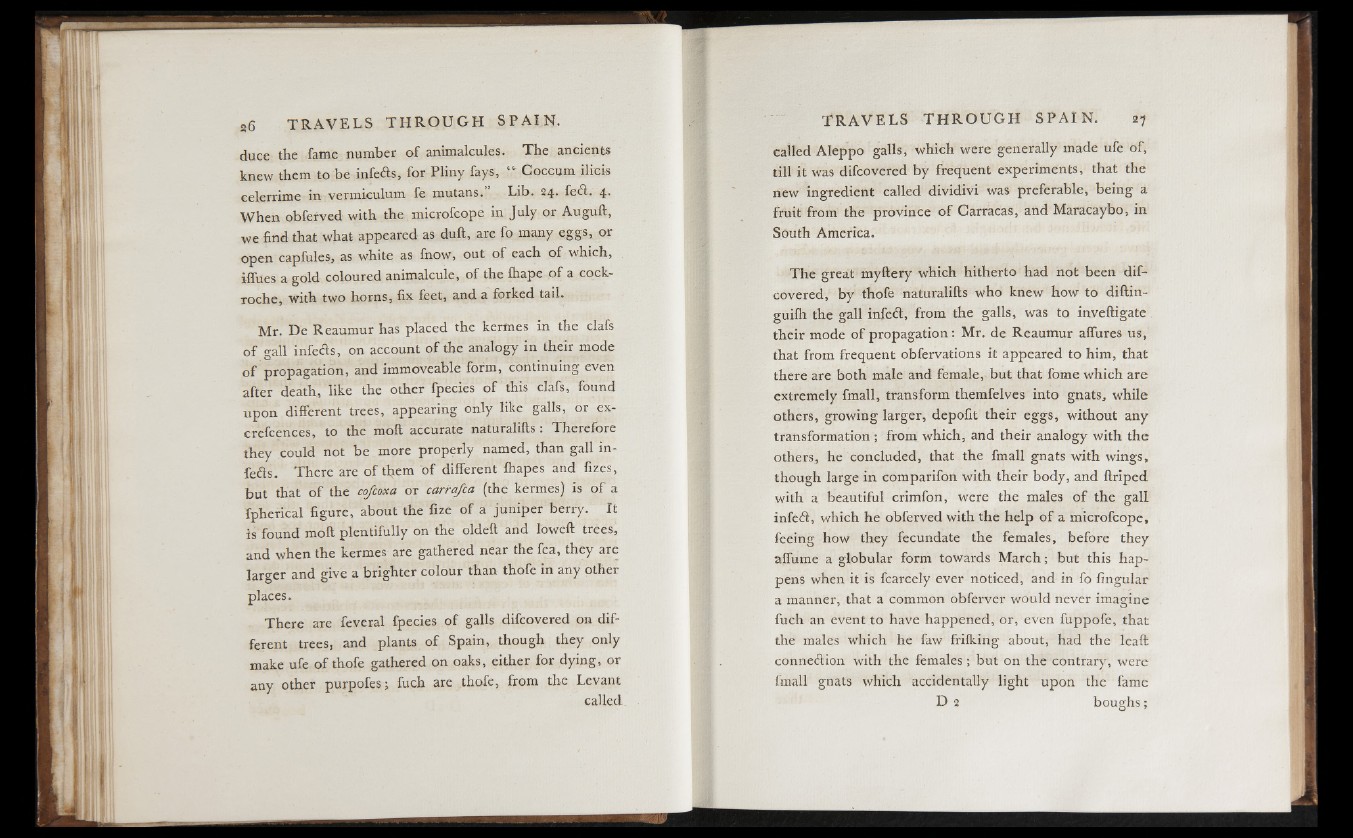
duce the fame number of animalcules. The ancients
knew them to be infefts, for Pliny fays, lt Coccum ilieis
celerrime in vermiculum fe mutans.” Lib. 24. feci. 4.
When obferved with the microfcope in July or Auguft,
we find that what appeared as duft, are fo many eggs, or
open capfules, as white as fnow, out of each of which,
iffues a gold coloured animalcule, of the ihape o f a cock-
roche, with two horns, fix feet, and a forked tail.
Mr. De Reaumur has placed the kermes in the clafs
of gall infers, on account of the analogy in their mode
o f propagation, and immoveable form, continuing even
after death, like the other fpecies o f this clafs, found
upon different trees, appearing only like galls, or ex-
crefcences, to the moft accurate naturalifts : Therefore
they could not be more properly named, than gall infe
r s . There are of tljem of different ihapes and fizes,
but that o f the cofcoxa or carrafca (the kermes) is o f a
fpherical figure, about the fize of a juniper berry. It
is found moft plentifully on the oldeft and loweft trees,
and when the kermes are gathered near the fea, they are
larger and give a brighter colour than thofe in any other
places.
There are feveral fpecies o f galls difcovered on different
trees, and plants of Spain, though they only
make ufe of thofe gathered on oaks, either for dying, or
any other purpofes; fuch are thofe, from the Levant
called
called Aleppo galls, which were generally made ufe of,
till it was difcovered by frequent experiments, that the
new ingredient called dividivi was preferable, being a
fruit from the province o f Garracas, and Maracaybo, in
South America.
The great myftery which hitherto had not been difcovered,
by thofe naturalifts who knew how to diftin-
guilh the gall inferi, from the galls, was to inveftigate
their mode of propagation: Mr. de Reaumur aifures us,
that from frequent obfervations it appeared to him, that
there are both male and female, but that fome which are
extremely fmall, transform themfelves into gnats, while
others, growing larger, depofit their eggs, without any
transformation; from which, and their analogy with the
others, he concluded, that the fmall gnats with wings,
though large in comparifon with their body, and ftriped
with a beautiful crimfon, were the males o f the gall
infeft, which he obferved with the help o f a microfcope,
feeing how they fecundate the females, before they
affume a globular form towards March; but this happens
when it is fcarcely ever noticed, and in fo lingular
a manner, that a common obferver would never imagine
fuch an event to have happened, or, even fuppofe, that
the males which he faw frifking about, had the leaft
connexion with the females; but on the contrary, were
fmall gnats which accidentally light upon the fame
D 2 boughs;